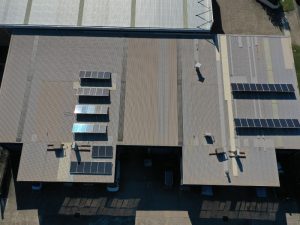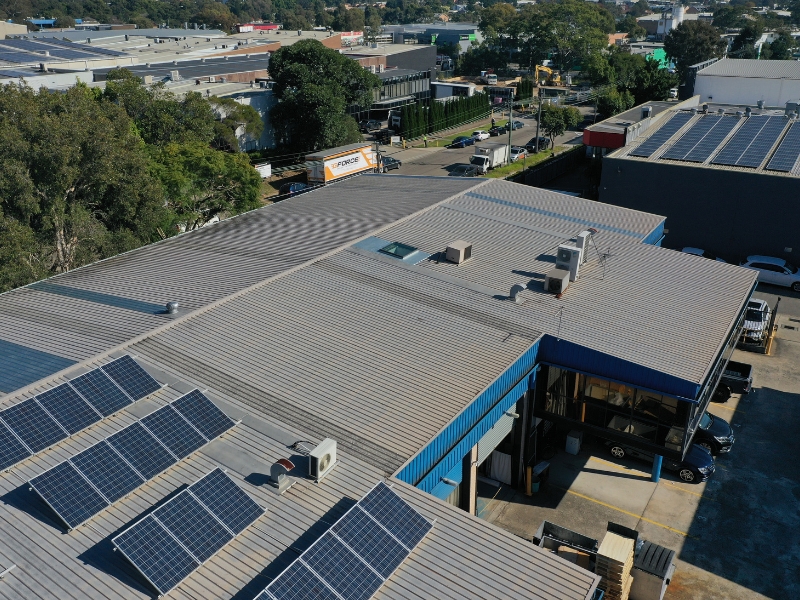When selecting commercial roofing materials, lifespan is one of the biggest concerns. Your roof isn’t just overhead protection—it impacts energy efficiency, maintenance costs, and overall property satisfaction. The wrong choice can drain your budget and lead to headaches within a few years. On the other hand, smart material selection keeps your building safe and compliant for decades. This guide explains what shortens roof life, which materials last, and how to make the right decision for your commercial property.
What are the common problems with commercial roofing materials?
Most commercial roofing failures don’t begin with major storms or freak events. They usually stem from everyday weaknesses in the material itself. Here are the most common issues that compromise roof durability:
- Cracking and blistering: Roofs made with membrane-based materials often show early signs of damage when exposed to extreme heat and UV radiation. Cracking from thermal movement creates weak spots where water can seep in and pool.
- Poor drainage: Flat or low-slope roofs frequently develop standing water problems, especially after heavy rain. Without a proper gradient, drainage systems fail to clear the surface, causing moisture damage and algae buildup.
- Metal corrosion and rust: Metal roofs that lack adequate coating or are installed near coastal zones can corrode rapidly, reducing structural reliability and increasing safety risks.
- Failed seals and loose fasteners: Expansion and contraction over time can loosen components. This creates gaps that let moisture and wind enter, undermining insulation and causing internal damage.
- Heavy debris damage: Branches, tools, and foot traffic all contribute to punctures or abrasions, particularly on softer materials like modified bitumen.
These issues often sneak up over time, especially when roof inspections are irregular. Minor faults can turn into major leaks when early warning signs are ignored or patched instead of being properly repaired.
Why do some commercial roofs underperform over time?
Roofing materials can underdeliver on their lifespan for several predictable reasons. Most of them trace back to a mismatch between material, environment, and expectations. Here are the top causes of reduced roof performance:
- A mismatch between materials and building use: Not all roofing suits all buildings. Lightweight products might seem attractive for cost savings, but they often lack the durability required for high-traffic rooftops.
- Exposure to unsuitable environmental conditions: Some materials absorb heat or moisture instead of repelling it. That results in accelerated breakdown in hot or humid climates or during freeze-thaw cycles in cooler areas.
- Neglecting maintenance requirements: A material’s projected lifespan means little if it isn’t inspected and cleaned regularly. Roofs deteriorate faster when basic upkeep isn’t maintained, such as clearing drains or resealing joints.
- Cutting corners during installation: Poor workmanship, improper flashing, or skipping vapour barriers will undermine even the best-rated materials, leading to water ingress and costly repairs from the very first year.
The aggravation from a failing roof isn’t limited to costs. It can delay operations, interrupt business continuity, and even lead to insurance claim disputes when faults are tied to poor planning or choice.
How can poor material choice affect long-term roof value?
Your roof’s material influences more than just appearance—it plays a major role in value retention and building performance. Here are the consequences of choosing low-performance materials:
- Reduced asset value: Potential buyers or tenants often assess roof condition. Outdated or visibly damaged materials reduce appeal, forcing owners to drop asking prices or cover replacements themselves.
- Ballooning operational costs: Short-lived materials need frequent patching. That drives up maintenance budgets, and unexpected leaks can damage inventory, interiors, and sensitive electronics.
- Regulatory and safety risks: Failing materials may not meet updated building codes. This exposes owners to fines and increases liability in the event of injury or damage.
- Energy inefficiency: Inferior thermal resistance forces HVAC systems to work harder. Higher energy bills have compounded over the years, especially in large structures.
To avoid these headaches, it’s smarter to explore commercial roofing materials used in industrial buildings that already meet performance benchmarks in tough environments.
What are the top-rated commercial roofing materials available?
Some materials are more than just industry staples—they’re consistent performers under pressure. Knowing which options hold up best can save you years of maintenance grief. Here are the highest performers in terms of durability:
Material Type | Average Lifespan | Key Benefits |
TPO (Thermoplastic) | 20–30 years | Reflects UV, heat-weldable seams |
PVC | 25–30 years | Chemical resistance, flexible, fire-safe |
EPDM (Rubber) | 25–35 years | UV-resistant, easy to install |
Metal Roofing | 30–50 years | Long lifespan, recyclable, strong |
Modified Bitumen | 15–25 years | Tough underfoot, multilayer protection |
Metal roofing stands out for its combination of strength and longevity. However, each building is different. Factors to weigh when selecting commercial roof materials include usage patterns, weight load limits, and whether the roof will support solar panels or HVAC units.
How do you choose the right commercial roofing materials for your building?
Material selection should match your building’s conditions and your business plans. A little thought up front saves big later on. Here are the criteria that help narrow down the best choice:

- Building design and slope: Materials like TPO or EPDM suit flat roofs, while metal performs well on pitched or complex profiles. Material compatibility with your roof’s shape plays a big role in performance.
- Local weather conditions: In fire-prone areas, you’ll want flame-retardant options. Coastal zones demand anti-corrosive coatings, while high-wind locations need robust fastening systems.
- Roof traffic and accessibility: Roofs used for storage or equipment access need stronger surfaces that resist compression and punctures. Lightweight membranes might wear too quickly under regular foot traffic.
- Installation timeline and budget: Some materials install faster than others, which may affect project schedules. The initial cost isn’t always the best indicator—long-term ROI often favours longer-lasting products.
- Code and permit compliance: Buildings in urban areas may face stricter zoning or environmental standards. Understanding permit needs for roofing projects ensures legal compliance and smoother approvals.
For commercial buildings with metal roofs, selecting the right materials is just the first step. Ongoing maintenance and repair services, such as rust prevention, resealing, and timely repairs, are crucial to ensure that your metal roof maintains its strength and durability over time.
Are new technologies improving commercial roofing materials?
Roofing materials are smarter and more efficient than ever. Innovations are targeting both durability and installation speed. Here are the innovations making roofing smarter and stronger:
- Cool roofing systems: Reflective coatings and membranes lower indoor temperatures and cut cooling bills significantly, particularly in hotter regions.
- Self-adhering membranes: These simplify installation, reduce fumes and drying time, and eliminate seams that can fail. The risk of installation errors drops sharply with these newer designs.
- Integrated monitoring: Sensors embedded under the roofing layer now allow for real-time leak detection and thermal mapping, alerting building managers before problems escalate.
- Improved protective layers: Zinc-aluminium and polymer-coated metals extend roof life by decades, particularly in zones with high rainfall or salinity.
These innovations aren’t theoretical—they’re being adopted in government and commercial buildings nationwide. For more on safe practice requirements, check commercial roof safety regulations in Australia to see if your chosen material aligns with regional codes.
Key takeaways when investing in commercial roofing materials
When selecting your next commercial roof, longevity and performance must guide the decision, not just price. Choosing a material suited to your building type, weather exposure, and structural needs prevents future disruptions and helps maximise property value. Lifespan, warranties, thermal performance, and safety ratings should all play into the final choice. Where possible, lean into trusted technologies and seek professional input early to avoid regret down the line. To better understand the impact of material quality on roof durability, see how Scott’s Metal Roofing approaches roof durability.

